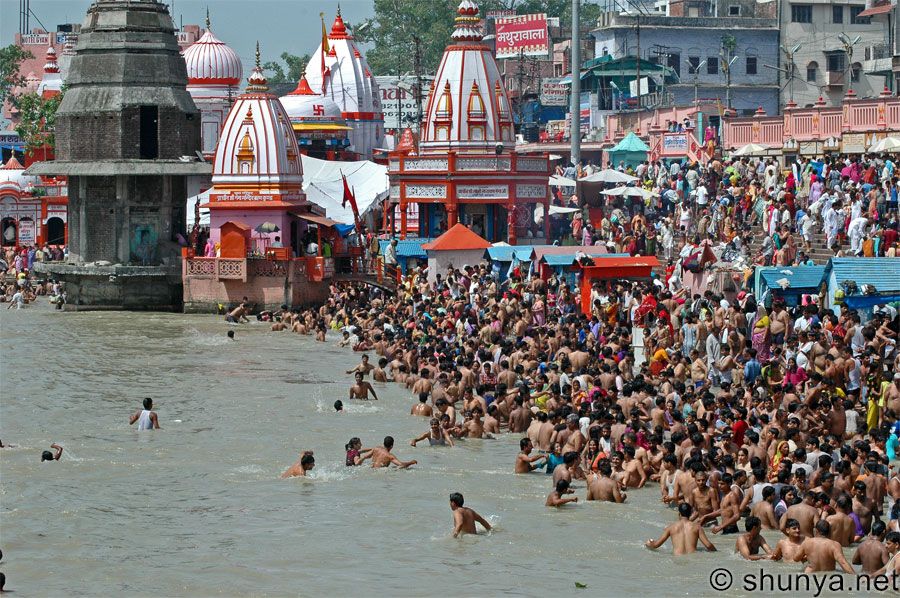
First ritual bath at Mahakumbh mela begins
Topics:
HARIDWAR: To the resonating sound of Vedic hymns, conch shells, cymbals and temple bells, the first 'snan', or holy dip, of the Mahakumbh Mela at Haridwar began in the early hours of Jan 14, the day when India celebrated the Makara Sankranti. ( Watch Video )
HARIDWAR: To the resonating sound of Vedic hymns, conch shells, cymbals and temple bells, the first 'snan', or holy dip, of the Mahakumbh Mela at Haridwar began in the early hours of Jan 14, the day when India celebrated the Makara Sankranti. ( Watch Video )
Thousands of pilgrims from India, and across the world, dipped into the achingly chilly waters of the holy river Ganga at Brahma Kund, an embanked stretch of the river just below the Shiva temple at the Har ki Pauri in the heart of the temple town on Thursday.
A pale sun shone through the mist at dawn as the crowd surged. The bathing hours will last through out the day and continue Jan 15, the day of Mauni Amavasya (new moon) and the solar eclipse.
The bathers - comprising mostly lay devotees and a few thousand sadhus- prayed to the sun and Shiva as they immersed themselves in the gushing torrents of the river at the Brahma Kund to the sound of devotional songs and prayer bells chiming from the nearby shrines.
According to Vedic myths, Hindus believe Haridwar is one of the places where a drop of 'amrit', or the nectar of immortality, fell from the 'Kumbh' pitcher when Garuda, the divine bird of Lord Vishnu, was spiriting it away during the war between the gods and the 'asuras' (demons).
Since then, Haridwar, along with Allahabad, Nasik and Ujjain - the four places where a drop of nectar trickled from the pot - have been celebrating the Kumbh Mela to commemorate the legend with seekers believing that a dip in the sacred waters at those places will give them immortality.
The Mahakumbh Mela occurs every 12 years.
The administration has deployed stringent security at the site to thwart any attempts at subversion and to keep massive crowds in check.
"We were expecting more pilgrims and holy men but many have gone to Haryana and south India to witness the solar eclipse. They will flock to Haridwar Jan 16. The city will draw more bathers on Basant Panchami Jan 20, when the goddess of learning, Swarasati, is venerated across the country," Hari Ram, the priest of a Shiva temple at Har-ki-Pauri, told IANS.
The religious gathering that began Jan 14 will end April 28 after the Baisakhi Shahi Snan - one of the most important bathing dates April 14. By then an estimated ten million people are expected to have visited Haridwar
http://timesofindia.indiatimes.com/india/First-ritual-bath-at-Mahakumbh-mela-begins/articleshow/5442851.cms
MAKAR SANKRANTI is one of the most auspicious occasion for the Hindus, who are celebrating in all parts of the country and the world today. The Makar Sankranti festival marks the day when the sun begins its northward journey and enters the sign of Makar (the Capricorn) from the Tropic of Cancer.
Makar Sankranti is also known as Khichadi or Til Sakranti in north India. The Magh Mela and the Gangasagar Mela held on Makar Sankranti and the devotees take a holy dip in Ganga & Ganga Sagar at various places.
Best wishes of Makarsankranti!"
No comments:
Post a Comment